A vigilant truck driver became an unexpected hero when he spotted a trembling little dog in distress, abandoned in a ditch on the side of the road in St. Louis, Missouri.
The driver’s keen awareness of his surroundings and unwavering commitment to making a difference played a pivotal role in saving its life.
The truck driver wasn’t able to stop, but he made sure to call Stray Rescue of St. Louis and let them know that there was a little puppy desperately needing help.
Even in our daily routines, we can make a significant positive impact by reaching out and lending a helping hand to those who cannot speak for themselves.
A Call For Help
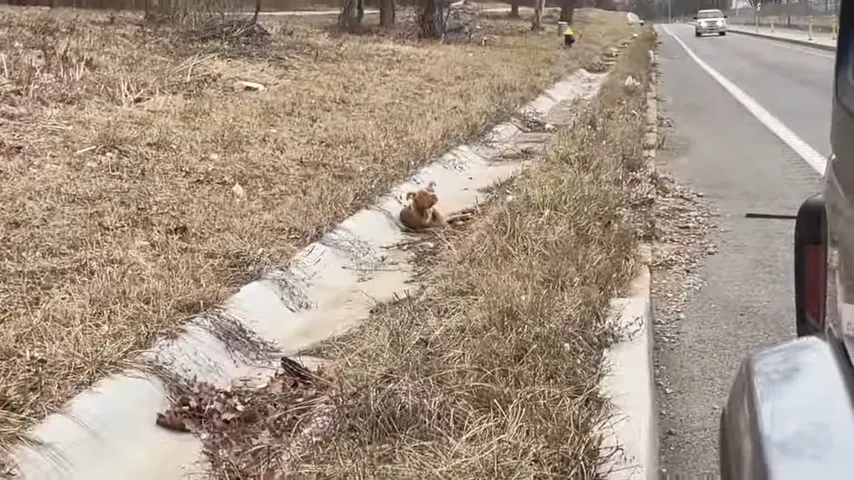
Stray Rescue of St. Louis was quick to respond when the Good Samaritan spotted the little brown and white puppy quivering in the ditch and called for help.
They immediately went to check it out, and were surprised to find a small pup, whom they decided to name Odella (in honor of the truck driver named Odell, who called and ultimately saved her life).
As soon as the puppy saw Donna Lochmann, Chief Life Saving Officer at Stray Rescue of St. Louis, her tail began to wag.
She was a little angel – terrified and hungry, but also very friendly.
What they didn’t know then was that Odella was actually in a lot of pain because she was hit by a car and had so many injuries.
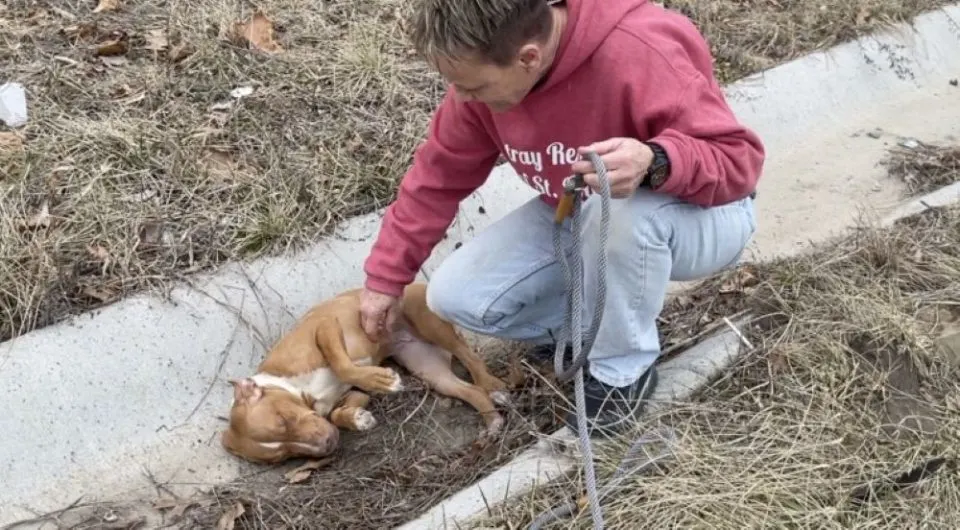
“We couldn’t tell at first, but sadly our clinic informed us that she has some significant injuries. X-rays indicate a dislocated hip and broken foot,” the rescue wrote on their blog post.
This little 6-month-old girl needed a lot of help, but thanks to Odell, she was finally getting the much-needed care.
“To picture her quivering in that ditch all by herself and hurting breaks our hearts. We are so grateful to the truck driver who somehow spotted her and saved her life. Her healing journey begins today,” the rescue added.
Odella’s Healing Journey
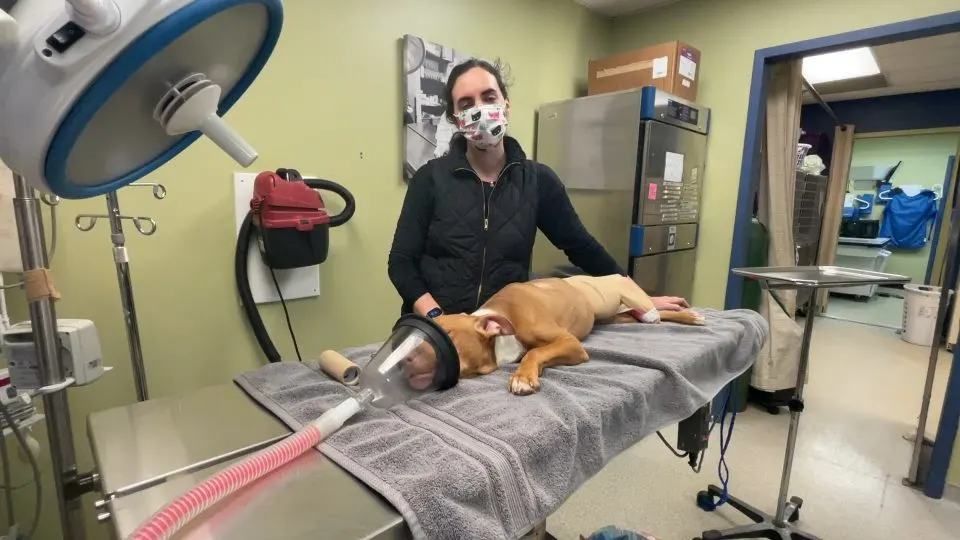
In order to save Odella’s leg, doctors had to pop her dislocated hip back in place and bandage it up with a splint.
The doctors and the rescue were doing everything in their power, so the sweet little baby could keep her leg.
Her healing journey took a little longer than expected due to another femur fracture, but thankfully, after a couple of months, she was perfectly healthy and able to get up and run again on all fours.
Throughout that process, Odella stayed with her foster mom, Donna.
Donna, who already had adopted a couple of rescues, fell head over heels with sweet angel, Odella.
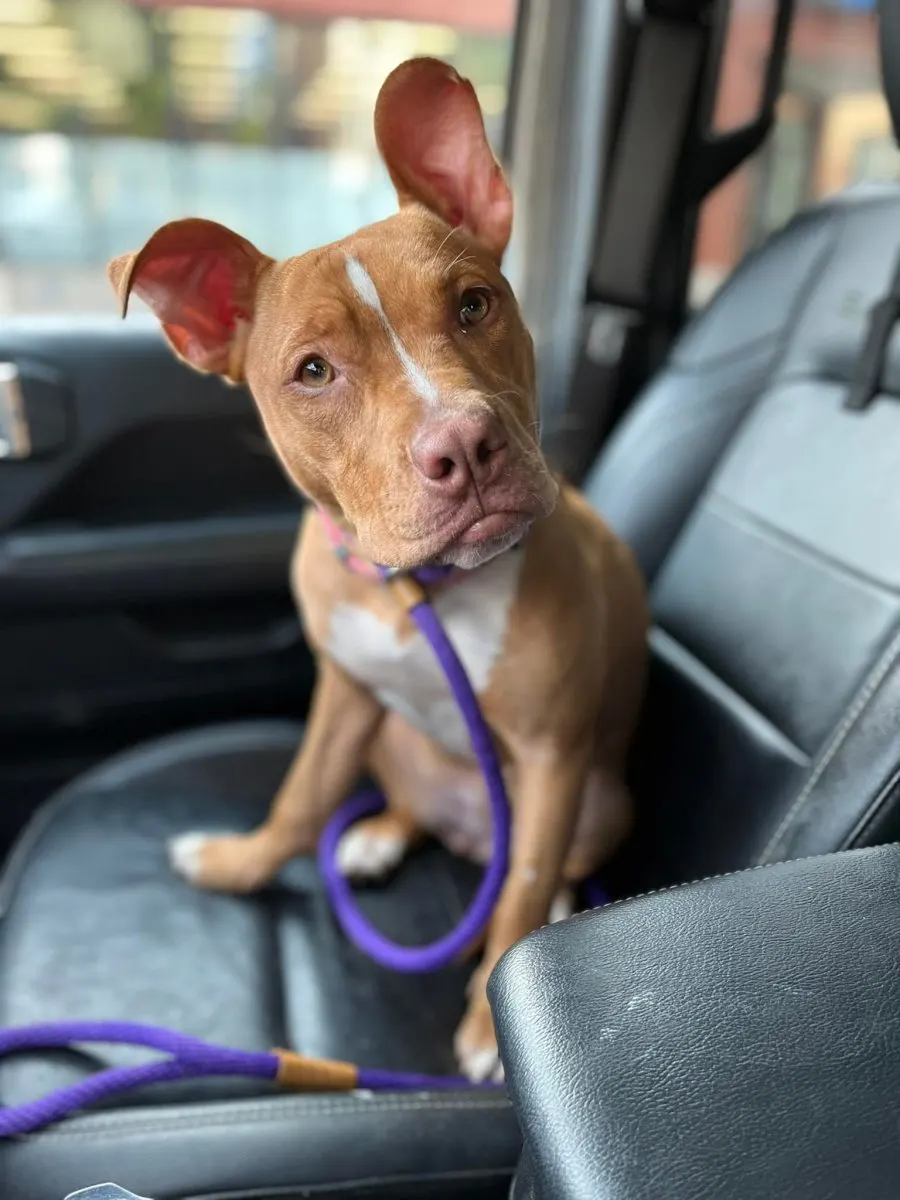
The moment Odella first arrived at Lochmann’s house, it was pretty obvious that she was never leaving.
Donna said in one of the comments on Facebook: “She just never left. She came in, unpacked her bags, and that was pretty much it!”
Odella is now enjoying her life with her mom and all her furry siblings.
“She has the happiest personality and bounces from one dog to another to find one that will keep playing! She loves her toys and peanut butter kongs,” Donna wrote.
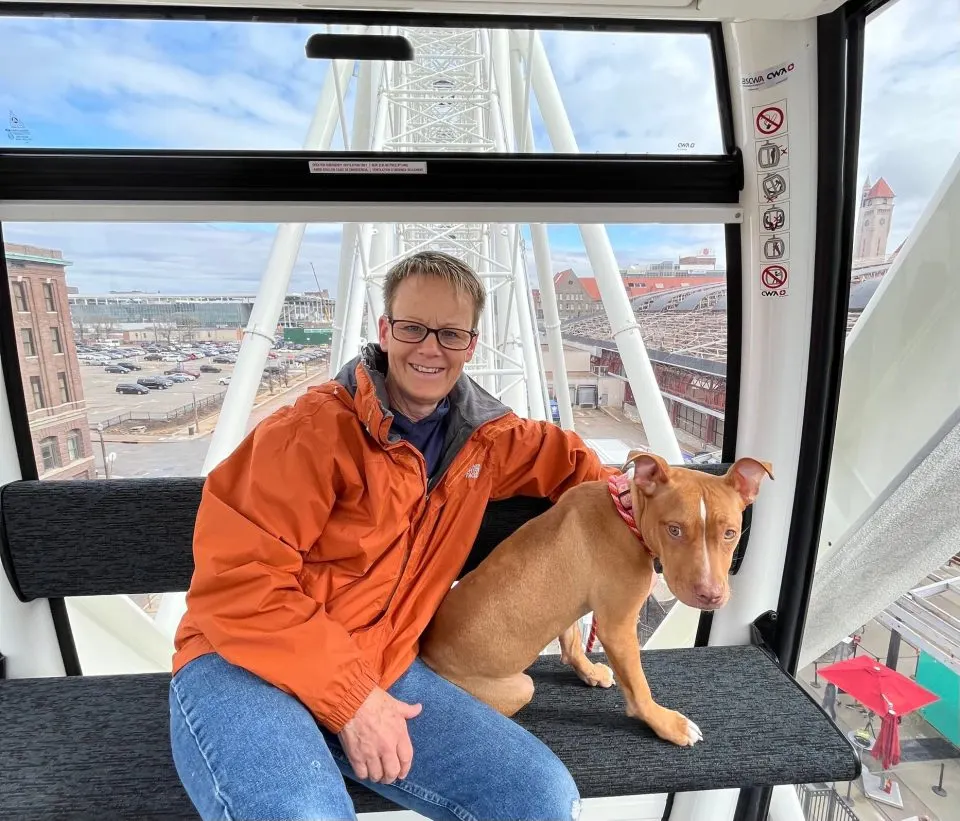
And, all of that would never have been possible if it had not been for Odell and his kindness.
One call was enough for this sweet pup to go from laying in a ditch with broken bones and no one to love her to living her best life with a loving family.
If you’ve ever noticed your furry friend panting heavily, you might wonder what’s behind their labored breathing. Dogs, like humans, use panting as a way to regulate their body temperature. But sometimes, heavy breathing can signal an underlying issue that requires attention. Understanding why your dog is breathing heavily can help you ensure they’re happy and healthy. Stay tuned to uncover the common reasons behind your pup’s heavy breathing.
Understanding Heavy Breathing in Dogs
The Basics of Canine Respiration
Dogs typically regulate their body temperature through panting. This natural behavior helps them cool down, similar to how humans sweat. When a dog pants heavily, it could be their way of coping with heat or excitement. However, if heavy breathing becomes persistent or occurs without an obvious trigger, it might signal an underlying problem that needs attention.
Normal vs. Abnormal Breathing Patterns
Knowing the difference between normal and abnormal breathing patterns in dogs is essential. Normal breathing in a dog is steady and quiet, with the chest rising and falling rhythmically. On the contrary, abnormal breathing might involve rapid, shallow breaths, wheezing, coughing, or any unusual sounds. These abnormal patterns could indicate issues such as heatstroke, respiratory problems, heart conditions, pain, or distress.
By understanding the basics of canine respiration and recognizing the distinctions between normal and abnormal breathing patterns, you can better assess your dog’s health and promptly address any concerning signs of heavy breathing.
Common Causes of Heavy Breathing in Dogs
Overexertion and Heat Stress
When your dog has been overly active, such as after a rigorous play session or exercise, heavy breathing could be due to overexertion. Dogs cool themselves by panting, so intense activity can lead to heavy breathing as their body tries to regulate its temperature. Additionally, hot weather can also cause heat stress in dogs, resulting in heavy breathing. Make sure your furry friend has access to water and shade to prevent overheating.
Obesity and Health Conditions
Just like in humans, obesity in dogs can lead to various health issues, including heavy breathing. Excess weight puts a strain on their respiratory system, making it harder for them to breathe normally. Apart from obesity, underlying health conditions such as heart disease or respiratory problems can also manifest as heavy breathing. Regular exercise and a balanced diet are crucial for maintaining your dog’s overall health and weight.
Anxiety and Stress Factors
Dogs can experience anxiety and stress due to various factors like changes in their environment, loud noises, separation from their owners, or unfamiliar situations. This emotional distress can lead to heavy breathing as a physical response to their heightened state of mind. Providing a safe and comforting environment, along with positive reinforcement training, can help reduce your dog’s anxiety levels and alleviate heavy breathing episodes.
When to Be Concerned
Recognizing Signs of Respiratory Distress
When your dog is breathing heavily, pay attention to signs that may indicate respiratory distress. Look out for extreme panting, shallow breathing, wheezing, or coughing. These signs could suggest underlying health issues that require prompt attention.
Differentiating Between Heavy Breathing and Panting
Distinguishing between heavy breathing and normal panting is essential. Heavy breathing is often more prolonged and intense than regular panting. If your dog is excessively panting even at rest or in cool environments, it might be a sign of a problem. Monitor your dog’s breathing patterns to spot any unusual or concerning behavior.
Seeking Veterinary Care
The Role of a Vet in Diagnosing Breathing Issues
When you notice your dog breathing heavily and suspect something is wrong, the best course of action is to seek veterinary care promptly. Vets play a crucial role in diagnosing the underlying causes of heavy breathing in dogs. They have the expertise to conduct thorough examinations, assess your dog’s overall health, and recommend appropriate treatment based on their findings.
Possible Tests and Treatments
Veterinary professionals may recommend various tests to pinpoint the exact reason behind your dog’s heavy breathing. These tests could include blood work, X-rays, ultrasounds, or even more specialized examinations to identify specific respiratory issues or underlying health conditions. Once the diagnosis is established, your vet will outline suitable treatment options tailored to address the root cause of your dog’s heavy breathing, which may involve medications, lifestyle changes, or other interventions to improve your furry friend’s respiratory health.
Preventive Measures and Care Tips
Managing Exercise and Activity Levels
Ensure you regulate your dog’s exercise and playtime to prevent overexertion, especially in hot weather. Excessive activity can lead to heavy breathing, so it’s vital to monitor their exercise levels.
Monitoring Weight and Diet
Keep an eye on your dog’s weight by providing a balanced diet and avoiding overfeeding. Obesity can contribute to heavy breathing issues, so maintaining a healthy weight through proper nutrition is crucial.
Conclusion
So, there you have it – heavy breathing in dogs can be caused by various factors, from overexertion to underlying health issues. It’s important to pay attention to any unusual breathing patterns your furry friend may exhibit, as it could be a sign of something more serious. Remember to keep an eye out for signs of distress like rapid panting, wheezing, or coughing. By taking preventive measures like managing exercise levels, monitoring weight, and seeking timely veterinary care, you can help ensure your dog’s respiratory health stays in check. Stay vigilant, stay informed, and most importantly, give your pup all the love and care they deserve.
Frequently Asked Questions
What are the signs of abnormal breathing patterns in dogs?
Abnormal breathing patterns in dogs include rapid breaths, wheezing, or coughing, indicating potential health issues.
What are some common causes of heavy breathing in dogs?
Common causes of heavy breathing in dogs are overexertion, heat stress, obesity, heart disease, and anxiety or stress factors.
How can I manage heavy breathing in my dog?
To manage heavy breathing in dogs, regulate exercise to prevent overexertion, monitor weight with a balanced diet to prevent obesity-related issues, and ensure proper nutrition for a healthy weight.
What signs indicate respiratory distress in dogs?
Signs of respiratory distress in dogs include extreme panting, shallow breathing, wheezing, or persistent coughing, warranting immediate veterinary attention.
[no_toc]

Hey there, I’m Janet Brooks, a dog-loving student from California. I’m all about helping pups in need, especially those without homes. Me and my awesome friends work together to give shelter and love to stray dogs. Oh, and I also write blogs about dogs to share helpful info.